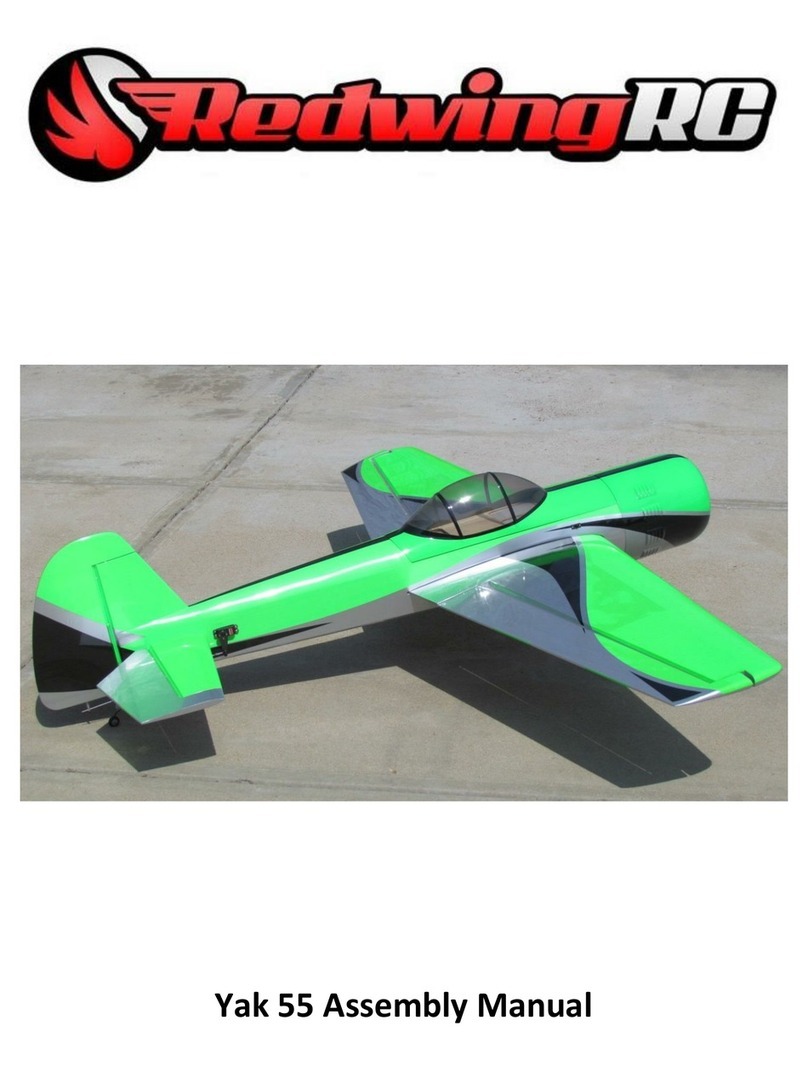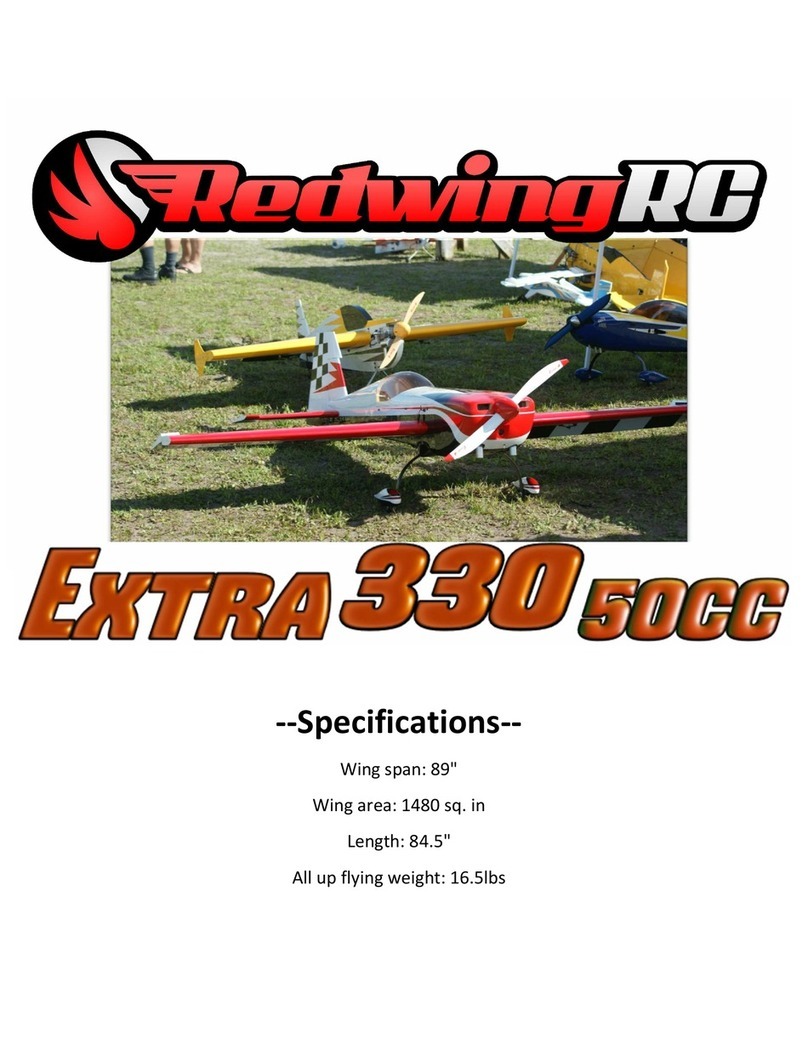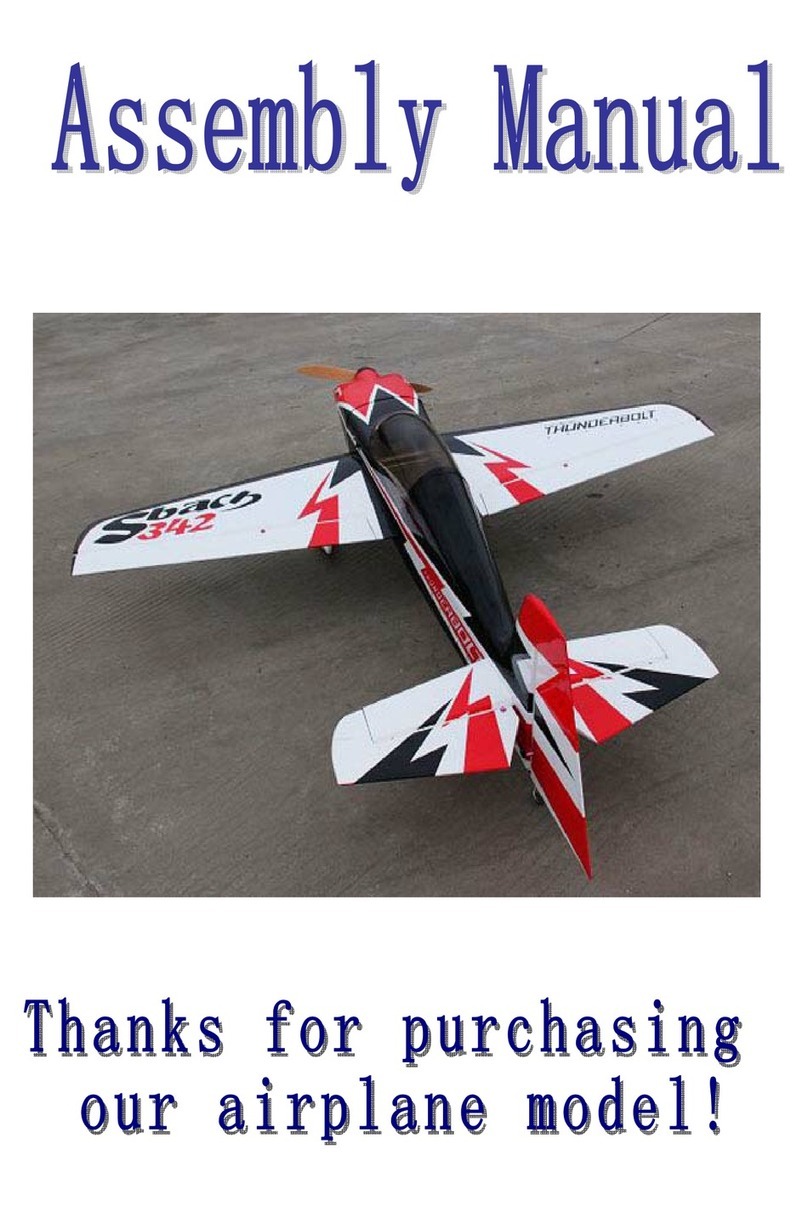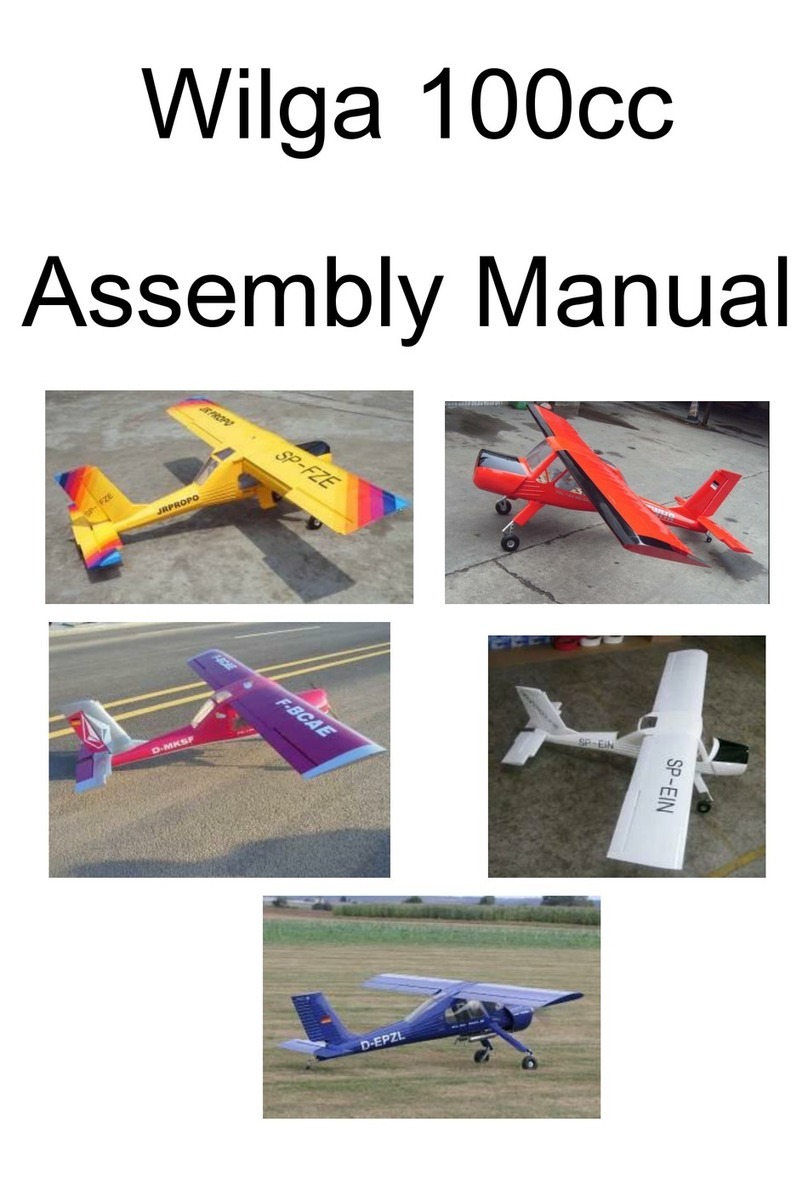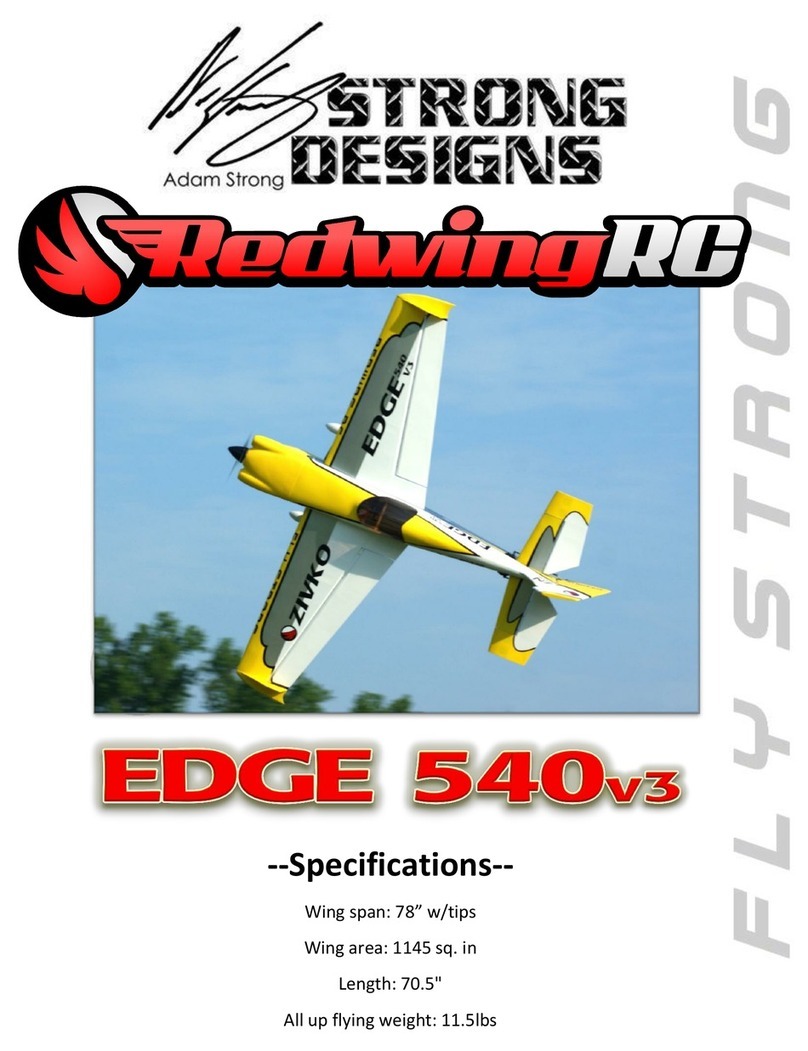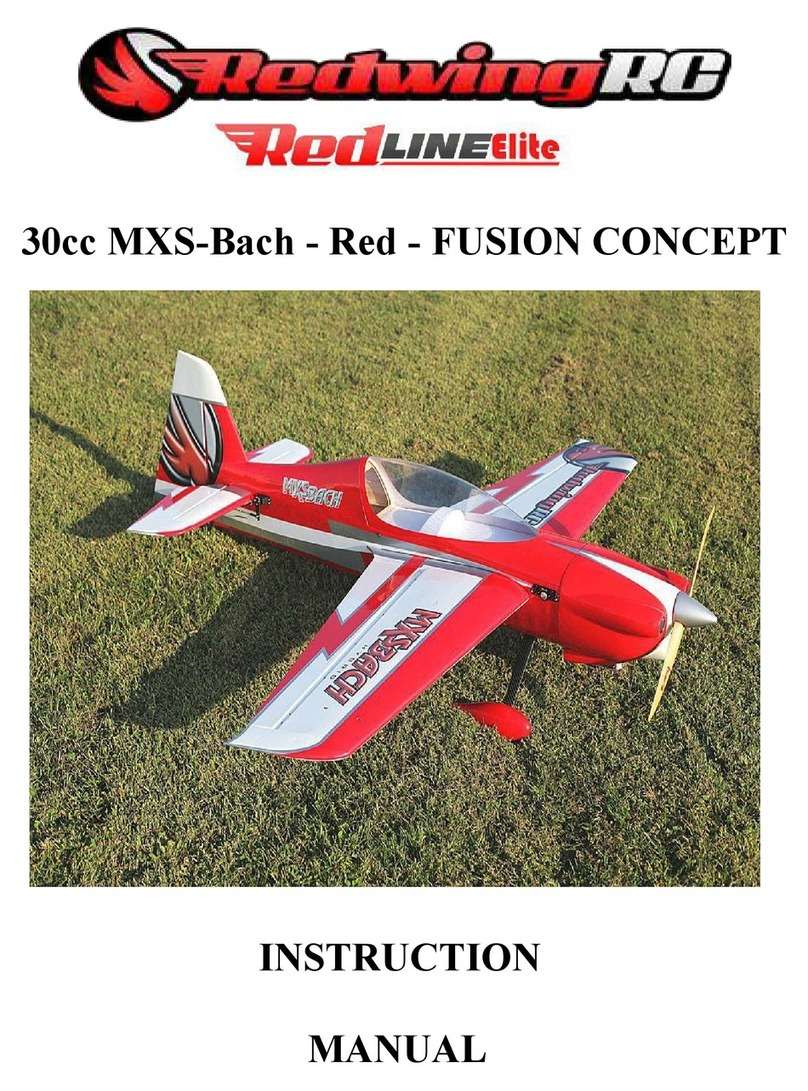
Notes on radio installation
While this airplane can be flown with a simple 4 channel transmitter, it is recommended that at least 6
channel computerized transmitter be used. The 4 channel transmitter would require the use of Y-
harnesses on both aileron and elevator servos. The 6 channel transmitter allows plugging each servo
into its own channel. Servo sub trim and end points can then be adjusted to optimize the servo control
horn configuration.
At neutral, aileron servo arms should be parallel with the aileron hinge line. Elevator servo arms
should be vertical.
Turnbuckle type pushrods are included for the ailerons and elevators. Turnbuckles have a left hand
thread on one end and a right hand thread on the other. They are convenient as they allow finer
adjustments than a conventional clevis. They also allow adjustment without disconnecting anything.
However, initially they are easier to set up if you center the servo arm, center the control surface and
hold the turnbuckle up to both ball links to see how far to thread the turnbuckle in. Thread the
turnbuckle this amount into each ball link. This will have the pushrod length close to what is needed.
It can be further adjusted after installing the servo arm on the servo.
Make a point to install the turnbuckles in the same direction on all control surfaces. For instance, use
the right hand thread at the servo and left hand thread at the control horn. If they are all installed the
same way, then rotating the turnbuckle clockwise or counter clockwise has the same effect on all
control surfaces. For instance, turning clockwise shortens the pushrod and pulls the control surface
down.
Recommended control setup has control surface ball links installed on the outer hole of the control
horns and the other ball link attached at the second from the outer hole on the servo arm. Adjust
servo end point on the transmitter to give desired control throw. Rudder ball links should be installed
using the outer holes on the servo arm.
Make sure elevator halves center to the same place. This is done by positioning the servo arms so they
are both vertical when the elevator stick is neutral. Adjust the length of the turnbuckle pushrods for
neutral elevator. Maximum throw in both directions is set with servo end point on the transmitter.
Select an inner hole on the throttle servo arm that requires servo throw of greater than 100% in both
low and high throttle directions. The model assembled for this manual has a 1” throttle arm on the
carburetor and the pushrod is ¾” from the center of the servo spline. This requires about 115% throw
in both high and low directions to achieve full throttle throw.






